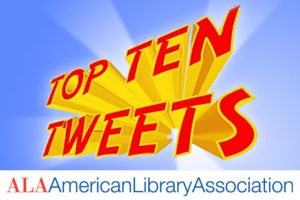
Robbie Barber, media and education technology instructor at Woodland Middle School in Decatur, Georgia, kicked off her “Marketing Your Library: Developing Relationships Through Public Relations” session in a unique way: She shared her failures.
“We don’t do this enough,” Barber told attendees at the American Library Association’s 2016 Annual Conference and Exhibition in Orlando, Florida, on Sunday. She showed attendees a Banned Books Week conversation prompt and movie trailer-style video promoting e-resources that went virtually unnoticed by students and faculty. She noted that even though they failed, “they could work for another school, or they could work another year.”
While Barber gave marketing and public relations tips from the perspective of a stressed school library budget, she addressed three areas that will help any type of library bring people into the building and increase user engagement: design, target marketing, and community outreach.
“Just because I’m poor and cheap doesn’t mean I can’t change my look,” Barber said, suggesting that simple fixes—applying inexpensive, colorful butcher paper to shelves to help draw students to sections, or grouping books by genre and adding special signs—can draw the eye and the reader. When she started grouping books by genre in her library, she said, “My humor section [checkouts] went up significantly. Some of those kids that walked away empty-handed before came away with a book.”
With regard to target markets, Barber stressed that school libraries need to reach not just students, but also teachers and administration. Some of things that worked for her included creating e-resource brochures specifically for teachers and putting them in their mailboxes, using celebrations like Pi Day and coding programs to attract students to the library, and sending updates and articles to stakeholders.
Barber’s school also improved community outreach by creating a library events calendar, making the library website easy to navigate, and hosting a carnival-themed family outreach night. “It’s really important when doing this outreach not to just do it outside,” said Barber. “It’s equally important to do it inside.”
Barber also stressed the importance of data. “You need to collect data. Everyone tells you that, but you need to think about what kind of data to collect,” she said.
Following her session, Barber encouraged school, public, and academic librarians to share their own marketing success stories.


